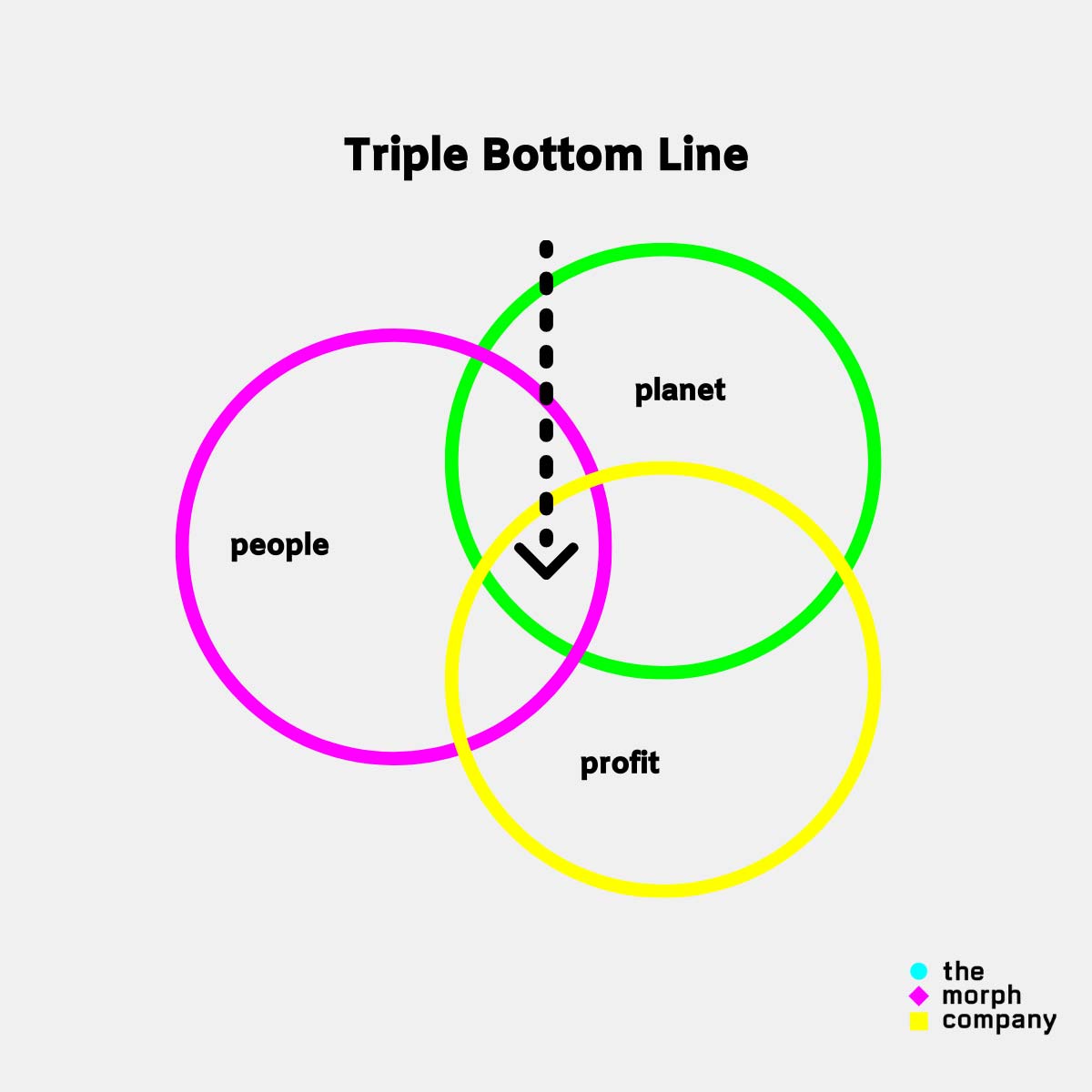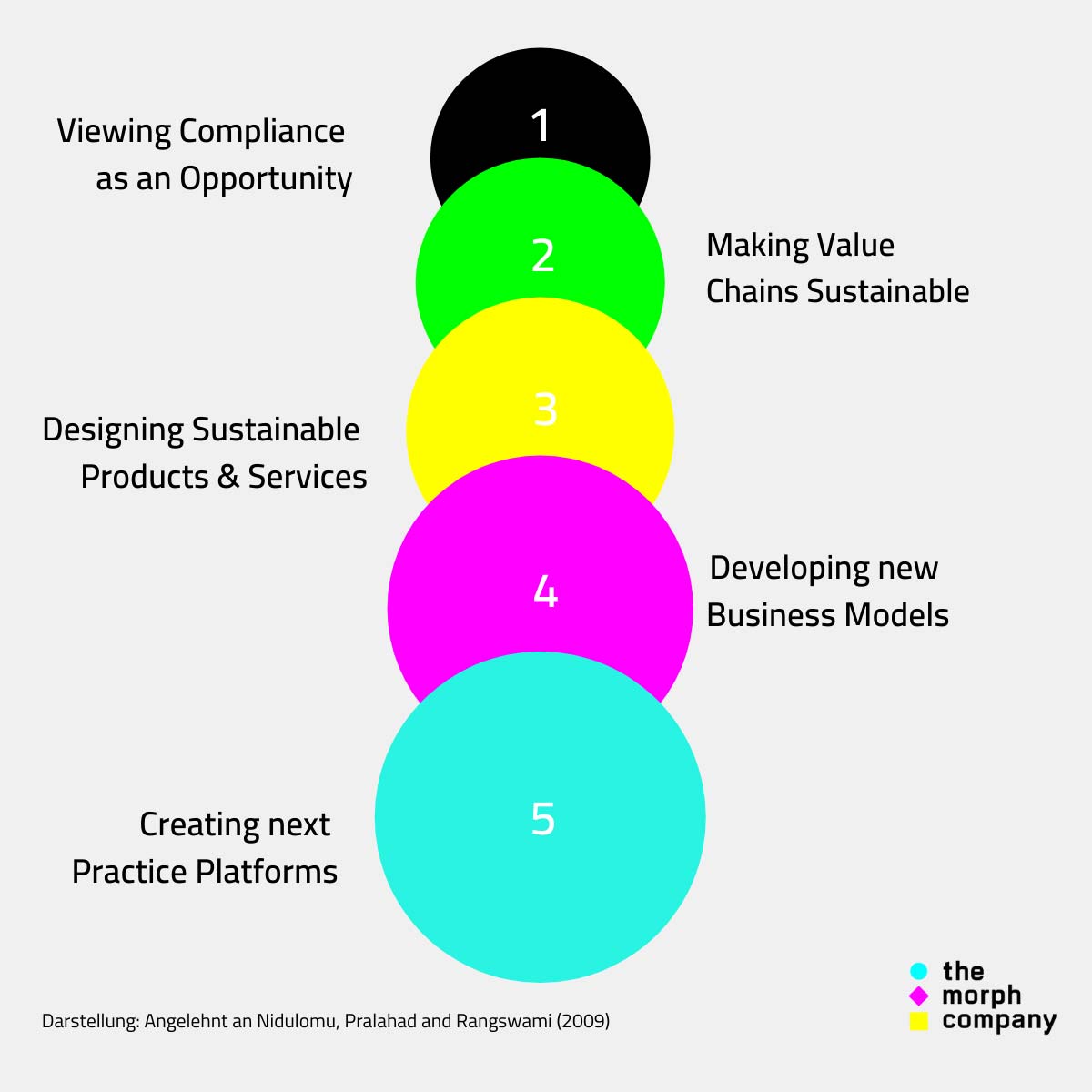Sustainable Businesses own the Future
These days, everyone talks about sustainability. Once having been a nichy “hippie” topic – think the 1980s and the anti-nuclear energy movement - both consumers as well as national and international regulations nowadays push for sustainable practices. The topic has become mainstream. Thus, many companies think about how to integrate sustainability into their business activities. Oftentimes, discussions evolve around cost efficiency. However, if tackled in the right way, sustainability can go way further than that and be a real innovation booster offering the opportunity to redesign business models and product ranges.
What is a Sustainable Business?
In der Zeitschrift Harvard Business Review magazine defines sustainable business practices as practices which at least do not harm humans and the planet. At best, sustainable business practices create value for stakeholders and are bound to tangible targets with regard to the businesses’ ecological and social impact. The definition explicitly excludes traditional CSR activities such as corporate volunteering. The “Triple Bottom Line” (see picture 1) concept developed by John Elkington in the late 1990s is perhaps the most widespread concept of business sustainability these days. It assigns the same value to businesses’ economic, ecological, and social targets, following the principle that profitability is important, but not at all costs.

Figure 1: The “Triple Bottom Line”-Approach. Own figure.
What is the business case behind sustainability?
First, there a several push factors which have an impact on businesses’ ecosystems and pressure them into developing sustainability strategies. Public Policies such as the EU Green Deal, the EU taxonomy for sustainable finance, the newly introduced German supply chain law and several court decisions all underline one fact: sustainability has come to stay. At the same time, consumers’ needs and priorities have changed. In 2018, 69 % of German consumers stated that their purchase decisions were impacted by sustainability criteria. More and more, they look for products which reflect their wish for more animal welfare, climate protection as well as human rights protection which results in an increase in demand for products which meet these criteria. Another survey concluded that media coverage on social and ecological responsibility was the only significant independent variable to explain consumers’ regard of and intent to purchase products from the respective companies. However, besides changes in public policies and consumer preferences, there is another push factor which is rarely discussed: physical risks. This terminus describes the risks stemming from environmental and climate events, for example floodings which destroy storehouses or production lines, droughts causing crop failures or rising sea levels resulting in uninhabitable swathes of land.
Besides these push factors, there are several pull factors for sustainability that are very much worth looking at. First, sustainability offers the opportunity for businesses to improve their risk management. Thinking long term, building value-based partnerships with suppliers enables businesses to identify potential risks early on and to manage them accordingly. Simultaneously, such partnerships guarantee high quality supplies and raw materials. Last, but not least, awareness for economic, social, ecological and regulatory changes brings businesses into a pole position when it comes to anticipating relevant changes early on, which gives them the time to act strategically. In a constantly changing and instable world, such an awareness becomes a real asset. Second, besides risk management, sustainability bares real innovation opportunities. Taking on a new perspective on the businesses’ value chain, even together with relevant stakeholders, enables decision makers and intrapreneurs to develop unique sustainable innovations. These could be production technologies or packaging solutions which are not only more energy- but also more cost-efficient, or a smart combination of existing solutions for new use cases. Or even new business models and products developed based on changed customer needs (see picture 2).

Figure 2: The five levels of innovation opportunities arising from more sustainable business practices. Own figure based on Nidulomu, Pralahad & Rangswami (2009)
However, besides the customers‘ needs it is also the employees’ needs and expectations which changed. A thought-through sustainability strategy can be real USP for employers which may result in decreased employee turnover rates as well as a decrease in associated opportunity costs. When looking to attract new, especially highly educated and globally mobile talent, such efforts can make the difference. Unsurprisingly, various surveys show that sustainable businesses yield better financial results than traditional businesses. Together with Harvard University, the global asset management firm Arabesque has systematically analysed the state of research on this question. 90 % of the academic research analysed concluded that sustainable businesses had access to new capital at less cost than traditional businesses. Furthermore, the analysis showed that sustainable business practices lead to a better operative performance (88 % of the research) and more favourable share prices (80 % of the research supported this conclusion). Boston Consulting Group Environmental and social responsibility only pay off for businesses if they follow an integrated approach. If their sustainability strategy only considers one of the aspects, business results may even be affected negatively.
How to take the First Steps Towards a Sustainability Strategy
Even though developing a sustainability strategy promises a lot of advantages and opportunities, at first, it may seem like an overwhelming task. Where to start and whom to include in the development process? Here are some thoughts on how to approach the topic step by step.
- Develop a joint understanding and first goals: What shall sustainability mean for us? What do we want to achieve with it? How can we measure it?
- Competency-check: What competencies are covered by existing staff? What skills do we need to hire? What collaborations could be advantageous?
- Develop an understanding of the topic’s high innovation and transformational potential – and frame it accordingly when communicating it to your employees.
- Actively involve employees in the transformation journey and jointly develop a new identity for your business, including corresponding processes and products.
- Think of and communicate the transformation as an iterative, adaptive process. This means that changing goals, requirements as well as customers’ and employees’ needs are part of the game and nourish the process.

Kommentare